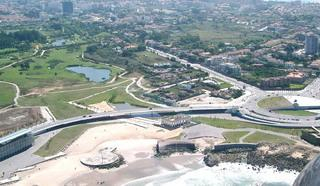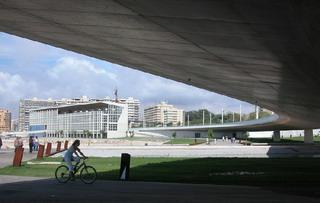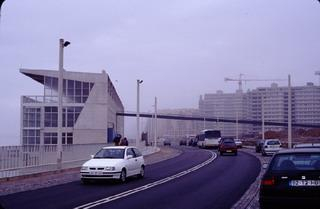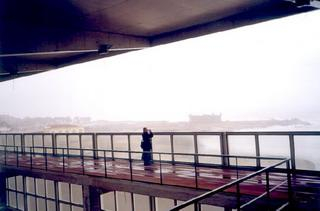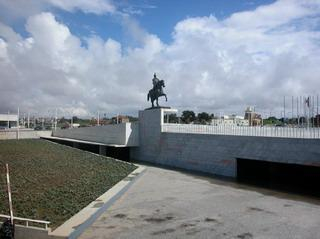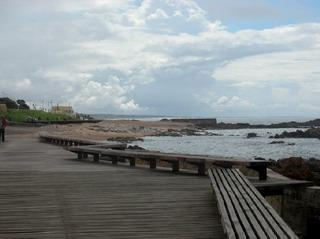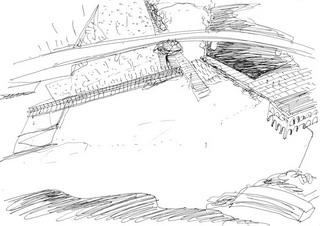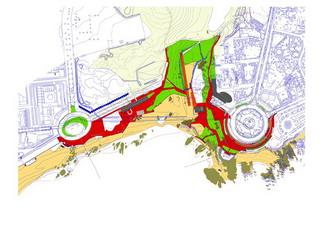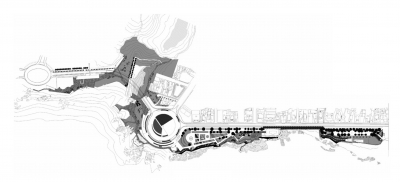Passeio Atlantico
The Atlantic coast of Porto is like a strip firrnly implanted, in which the multiple traverse furrows of the sea are reduced by the city, with its great alignments of rectilinear avenues, façades and continuous walls. Almost three kilometres of irregular points and rocky valleys were unified by the wide perspectives of Avenida Brasil, Avenida Montevideu and Largo Rio de Janeiro. However, the extraordinary beauty of both matter and shape of these small successive scarps can be appreciated, above all, through a close look, which a sidewalk along the coast and contemplative rest will offer.
The projects to the marine front of Parque da Cidade and Avenida Montevideu (from Praça Salvador da Baia to Molhe) intend to break this monolithic ordination and to introduce another scale of experience of the coast. A scale that looks for the recognition of smaller shapes of the land, those that observation discovers while "promenading" by the several spaces (small retreats, viewpoints, terraces, support walls, kiosks, etc.)
It Is In Vale das Galinheiras, between the scarp of Castego do Queijo and Circunvalacao de Matosinhos that this principle is more strongly expressed. The great operation of re-naturalization of the valley, demolishing the road embankment (replaced by a viaduct) and creating a natural system beach-park, as new landscape and recreational framing, supposes a fundamental statement on the permanence of the dimensional volumes, close and specific of the coast uses (walk, rest, bath, contemplation) allied to the great scale of the ways of its road crossing or of its front construction.
The construction of three important structures (the transparent building, the viaduct and the parking-lot) is indispensable for the active functioning of a front of such length which, linked at North to the beaches of Matosinhos and South to the Foz quarter, creates courses of great territorial meaning. The smaler equipments close to the water, below the level of the gardens of Montevideu complete this attention to the maritime image: sea, rocks, sky, salt, skims and sea air, apposed to the rigidity of urban circulation and residence.
In the Urban Front of Parque da Cidade, the thinking and rethinking of the landscape is, in fact the origin and the substance of this project. It was the conviction that the form of the urban geography is the main reason to configure a free space and that in this place topographical and specific landscape circumstances coexist, that orientated methodologically the progress of the idea and the successive definition of its elements. On one side, the project starts from the landscape recognition of the potential of Vale das Galinheiras that, taking shelter at the hill of Queijo, formed, from East to West, the slope that gave place to the urban axis of Boavista, the more vigorous road plan of Porto s area.
The old cartography and the geological plans prove the morphologic obstruction imposed on the original coast strip s section by the embankment produced by a railway company to take their lines to Matosinhos In 1880, and later, starting from 1890, by the progressive construction of the Esplanada Rio de Janeiro, increasing the embankment in width and height and forcing a vertical front on the coast line, despite of its difficult stabilization.
On the other hand, the seafront scale will have to relate the prominent mark created by Castelo do Queijo and the great town facade, configured from the front of Matosinhos, as backdrop of the coast line and the beach. The beach strips unity as ladscape form, is therefore recognized as basic decision of the project.
In the coast road, along Avenida Montevideu, it s the seas direct formation that guides the project decisions. To get an itinerary close to the rocks and the water, towards an intimate contact, is as important as to tear wide views from the city level, in a way that the coasts panoramic view is incorporated in the urban experience.
Today, territorial thought allows and claims an use of its spaces, not only as natural reserves, but also as civilized public spaces, product of human elaboration and activity, true products of time.
Manuel de Solà-Morales

